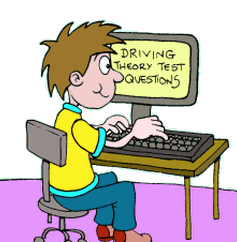What causes accidents: speed
There is a well known saying from safety campaigns which simply says that "speed kills".
Although many people think that you have to be travelling really quickly in order to make an impact sufficient enough to seriously injure someone or to kill them - such as the sorts of speeds you see on the motorway - this is not actually the case.
Indeed even at what you might consider 'low' speeds, like those around streets in towns and cities, just a few mph can make a major difference to the strength of an impact and therefore the severity of an accident, whether or not it involves other people or is a single vehicle crash impact.
Going a little too fast is doubly dangerous. First of all, it means that you have less time to react to an unexpected situation - for instance something running across the road. But secondly, if you hit that object or person at the higher speed then the impact is much more severe too.
This is why you should always stick to speed limits even if you think it is safe to go quicker: it is never safe, because the unexpected could always happen. Travelling at 35mph instead of 30mph where that is the speed limit could lead to the difference between life and death for someone who gets involved in an accident with a pedestrian.
Related Articles...
Driving Theory Test
Until relatively recently in driving history, there was no theory test. From the time the first person passed a driving test in the UK in 1935 through to 1996, there was no separate theory test. ...
Before Learning to Drive
The minimum age at which you are allowed to learn to drive a car on public roads is 17. As you probably know, you are not allowed to drive legally on your own until you pass your test. This means...
How to cancel a theory test
When you book a theory test, you of course choose a date that you think you are going to be able to make.
However with the best will in the world, there are a whole range of reasons why on...
What details to get at an accident
When you swap details with a driver, here are the things that you should be sure to obtain from the other driver:
You need to of course get their name, their address and a contact telephone...
The Advanced Driving Test
There are advantages to continuing to study driving by means of a course like the advanced driving test, because it will help to give you the chance to develop your skills even further than you had...
What to do when you sell a vehicle
When you sell a vehicle, there are some things that you have to do straight away. As soon as the vehicle is sold you have to tell the DVLA, which stands for the Driver and Vehicle Licensing Agency,...
Risk factors when driving: snow and ice
When the snow is falling, there is one big problem - it is hard to see far infront. So like fog, reduced visibility is the problem with snow. And when there is heavy snowfall it can be very hard...
Your ignition warning light
When you turn on the electrical circuits in your car, then the ignition warning light will come on: make sure that this does indeed happen.
Once the engine itself is started, then the ignition...
Your driving licence: getting it back
As the New Drivers Act article outlines, if you get six penalty points or more in the first two years of having a licence, then it is revoked and you have to retake both tests: the theory and the...
Driving Theory Stopping Distances
Stopping distances refer to the distance that you car is going to travel from the time that you decide that you need to press the brake through the time that the vehicle physically stops...
Back to home page of driving theory test questions

